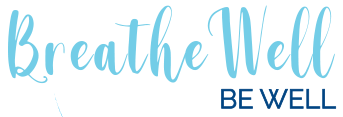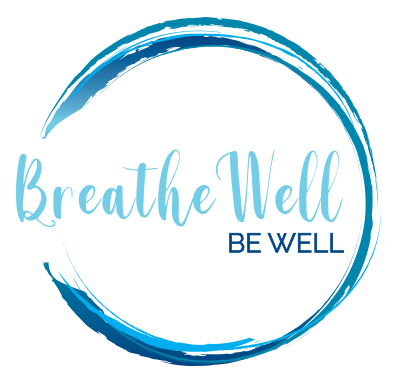
I now have owned this book twice (gave away the first copy and needed another for myself), as well as have the Audible version for listening when walking or driving. I cannot say more positive things about the book that finally helped America pay more attention to their breathing patterns. What I love most is James Nestor’s ability to take very complex topics and break them down into digestible bites. He also literally plugs up his nose to prove the importance of nasal breathing! Seriously! I know his pain from years of an obstructed airway, deviated nasal septum and poor oral rest posture.
Side note – these are all preventable! We are all born nasal breathers. Yet from either environment, anatomy, oral patterns or anatomical restrictions, we end up breathing with our mouth open. An example is a family gets a pet in elementary school, which triggers kid’s allergies making it hard to breath through their nose. More importantly, when we learn to mouth breath versus nasal breath our faces end up growing more long and narrow versus wide and forward. Why this matters all boils down to airway space. Long and narrow faces usually mean high and narrow palates, greatly decreasing nasal airway and possibly leading to a deviated septum. This also means less space in the oropharyngeal space (i.e., your throat). So literally you are perpetuating the problem. Nasal disuse is when you lose functioning of your nose from disuse. Not fun! But the body is smart and knows it wants to be healthy. And thanks to neuroplasticity, once we start using something in a functional way the brain will help form pathways to support this action! So start using your nose again and it gets easier to do. Become more aware of mouth breathing and you don’t have to think so hard about it. Paths. Programs. Actions. The body will start to become more attuned to doing something and in turn won’t have to work so hard to continue doing it. Practice and patience is the key here.
Sorry, not sorry for the long rant. I will be explaining this till my dying day. It’s THAT important! And luckily now I have Nestor’s book to help back me up! So, if you enjoy learning new things about your health, are interested in breathing better, want to improve you lifespan and enjoy science, get this book! Let me know your thoughts!
To get you started, check out the excerpt from BREATH below:
Chapter One: The Worst Breathers in the Animal Kingdom
The patient arrived, pale and torpid, at 9:32 a.m. Male, middle-aged, 175 pounds. Talkative and friendly but visibly anxious. Pain: none. Fatigue: a little. Level of anxiety: moderate. Fears about progression and future symptoms: high.
Patient reported that he was raised in a modern suburban environment, bottle-fed at six months, and weaned onto jarred commercial foods. The lack of chewing associated with this soft diet stunted bone development in his dental arches and sinus cavity, leading to chronic nasal congestion.
By age 15, patient was subsisting on even softer, highly processed foods consisting mostly of white bread, sweetened fruit juices, canned vegetables, Steak-umms, Velveeta sandwiches, microwave taquitos, Hostess Sno Balls, and Reggie! bars. His mouth had become so underdeveloped it could not accommodate 32 permanent teeth; incisors and canines grew in crooked, requiring extractions, braces, retainers, and headgear to straighten. Three years of orthodontics made his small mouth even smaller, so his tongue no longer properly fit between his teeth. When he stuck it out, which he did often, visible imprints laced its sides, a precursor to snoring.
At 17, four impacted wisdom teeth were removed, which further decreased the size of his mouth while increasing his chances of developing the chronic nocturnal choking known as sleep apnea. As he aged into his 20s and 30s, his breathing became more labored and dysfunctional and his airways became more obstructed. His face would continue a vertical growth pattern that led to sagging eyes, doughy cheeks, a sloping forehead, and a protruding nose.
This atrophied, underdeveloped mouth, throat, and skull, unfortunately, belongs to me.
I’m lying on the examination chair in the Stanford Department of Otolaryngology Head and Neck Surgery Center looking at myself, looking into myself. For the past several minutes, Dr. Jayakar Nayak, a nasal and sinus surgeon, has been gingerly coaxing an endoscope camera through my right nasal cavity. He’s gone so deep into my head that it’s come out the other side, into my throat.
“Say eeee,” he says. Nayak has a halo of black hair, square glasses, cushioned running shoes, and a white coat. But I’m not looking at his clothes, or his face. I’m wearing a pair of video goggles that are streaming a live feed of the journey through the rolling dunes, swampy marshes, and stalactites inside my severely damaged sinuses. I’m trying not to cough or choke or gag as that endoscope squirms a little farther down.
“Say eeee,” Nayak repeats. I say it and watch as the soft tissue around my larynx, pink and fleshy and coated in slime, opens and closes like a stop-motion Georgia O’Keeffe flower.
This isn’t a pleasure cruise. Twenty-five sextillion molecules (that’s 250 with 20 zeros after it) take this same voyage 18 times a minute, 25,000 times a day. I’ve come here to see, feel, and learn where all this air is supposed to enter our bodies. And I’ve come to say goodbye to my nose for the next ten days.
For the past century, the prevailing belief in Western medicine was that the nose was more or less an ancillary organ. We should breathe out of it if we can, the thinking went, but if not, no problem. That’s what the mouth is for.
Many doctors, researchers, and scientists still support this position. Breathing tubes, mouthbreathing, and nasal breathing are all just means to the same end. There are 27 departments at the National Institute of Health devoted to lungs, eyes, skin disease, ears, and so on. The nose and sinuses aren’t represented in any of them.
Nayak finds this absurd. He is the chief of rhinology research at Stanford. He heads an internationally renowned laboratory focused entirely on understanding the hidden power of the nose. He’s found that those dunes, stalactites, and marshes inside the human head orchestrate a multitude of functions for the body. Vital functions. “Those structures are in there for a reason!” he told me earlier. Nayak has a special reverence for the nose, which he believes is greatly misunderstood and underappreciated. Which is why he’s so interested to see what happens to a body that functions without one. Which is what brought me here.
Starting today, I’ll spend the next quarter of a million breaths with silicone plugs blocking my nostrils and surgical tape over the plugs to stop even the faintest amount of air from entering or exiting my nose. I’ll breathe only through my mouth, a heinous experiment that will be exhausting and miserable, but has a clear point.
Forty percent of today’s population suffers from chronic nasal obstruction, and around half of us are habitual mouthbreathers, with females and children suffering the most. The causes are many: dry air to stress, inflammation to allergies, pollution to pharmaceuticals. But much of the blame, I’ll soon learn, can be placed on the ever-shrinking real estate in the front of the human skull.
When mouths don’t grow wide enough, the roof of the mouth tends to rise up instead of out, forming what’s called a V-shape or high-arched palate. The upward growth impedes the development of the nasal cavity, shrinking it and disrupting the delicate structures in the nose. The reduced nasal space leads to obstruction and inhibits airflow. Overall, humans have the sad distinction of being the most plugged-up species on Earth.


 Live with intention. Move with gratitude. Breathe with purpose.
Live with intention. Move with gratitude. Breathe with purpose.

